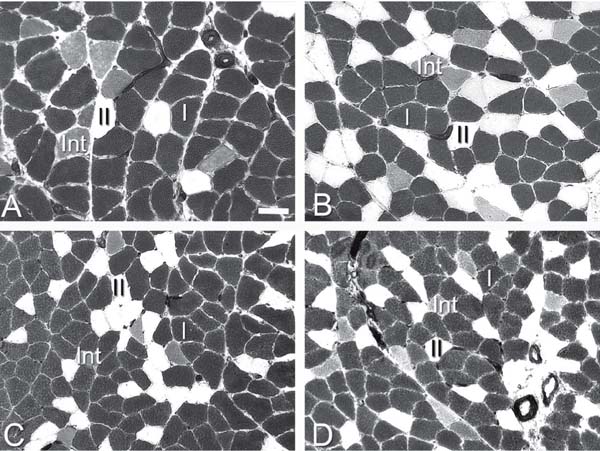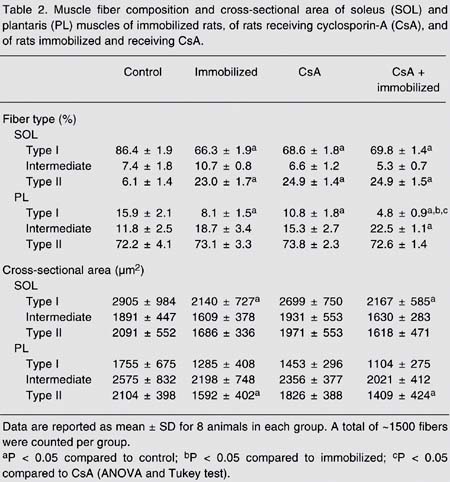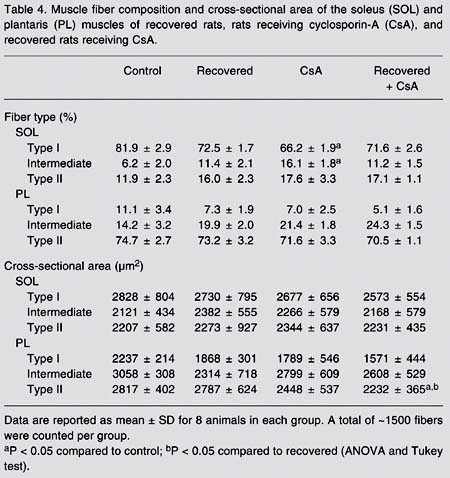Cyclosporin-A (CsA) is an immunosuppressive drug that acts as an inhibitor of calcineurin, a calcium phosphatase that has been suggested to play a role in skeletal muscle hypertrophy. The aim of the present study was to determine the effect of CsA administration (25 mg kg-1 day-1) on skeletal muscle mass and phenotype during disuse and recovery. Male Wistar rats received vehicle (N = 8) or CsA (N = 8) during hind limb immobilization (N = 8) and recovery (N = 8). Muscle weight (dry/wet) and cross-sectional area were evaluated to verify the effect of CsA treatment on muscle mass. Muscle phenotype was assessed by histochemistry of myosin ATPase. CsA administration during immobilization and recovery did not change muscle/body weight ratio in the soleus (SOL) or plantaris (PL). Regarding muscle phenotype, we observed a consistent slow-to-fast shift in all experimental groups (immobilized only, receiving CsA only, and immobilized receiving CsA) as compared to control in both SOL and PL (P < 0.05). During recovery, no difference was observed in SOL or PL fiber type composition between the experimental recovered group and recovered group receiving CsA compared to their respective controls. Considering the muscle/body weight ratio, CsA administration does not maximize muscle mass loss induced by immobilization. Our results also indicate that CsA fails to block skeletal muscle regrowth after disuse. The present data suggest that calcineurin inhibition by CsA modulates muscle phenotype rather than muscle mass.
Calcineurin; Immobilization; Recovery; Skeletal muscle; Hypertrophy; Cyclosporin-A







